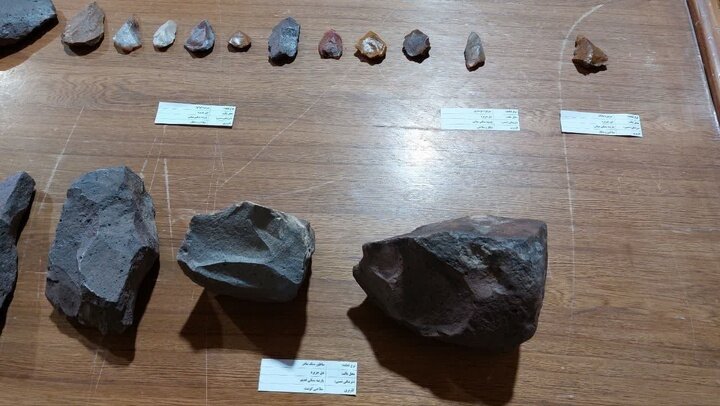500,000-year-old stone tools discovered in South Khorasan

TEHRAN—Manager of South Khorasan Cultural Heritage Department Ahmad Barabadi announced the identification of the first samples of Acheulean industry, including hand axes dating back about half a million years, at the ancient site of Dagh Island in Aysak city in Sarayan, South Khorasan province. A discovery that could open a new window to understanding the history of human settlement in the eastern Iranian plateau, he added.
According to Miras Arya (CHTN), Barabadi referred to the importance of these findings, adding that the recent explorations, which have begun five decades after archeological activities of the Paleolithic era in Khounik Cave, have achieved to present various layers in 13 trenches from the ancient site.
Based on the preliminary evaluations, the objects pertaining to the Middle Paleolithic period are between 100,000 and 200,000 years old, and artifacts from the Upper Paleolithic period are more than 500,000 years old, he said.
However, the final determination of the age requires detailed laboratory studies in reliable centers so that the data can be analyzed scientifically and documented, he pointed out. These findings could mark a new chapter in understanding the course of human evolution on the Iranian Plateau, he added.
Also, Ali Sadraei, archaeologist who led the exploration team, said that samples of Acheulean industry, including hand axes dating back about half a million years, have been identified for the first time in the eastern Iran.
Acheulean industry which had been identified earlier in west of Iran and other parts of the world, currently with this identification, establishes the place of eastern Iran on the map of the cultural and technological dispersion of early humans, he said.
Archaeological explorations have been started as of Iranian month of Tir with support of South Khorasan Cultural Heritage Department, he mentioned, adding that it is now in its final stages. He continued that various stone tools, Middle Paleolithic bayonets, and evidence of interglacial settlements have so far been discovered.
Mohammad Nasiri, a representative of Ferdows, Tabas, and Sarayan counties in Majlis, also visited this ancient site and emphasized the need to protect these artifacts.
He said that this precious heritage is part of the identity and ancient civilization of South Khorasan and should be transformed into one of the country's outstanding scientific and historical tourism attractions with principled planning.
The ancient site of Daqh Jazeera (Dagh Island) with an area of more than 300 hectares in the southwestern Aysak district of Sarayan county is considered the largest Paleolithic site in eastern Iran. The recent discovery is an important step in rereading the history of human life in this region and can draw new horizons in archaeological studies and the development of scientific tourism in the east of the country.
South Khorasan is a cultural heritage province, boasting remarkable capacities which should be presented to the domestic and inbound tourists through media.
The Lut Desert is located in the southeast part of Iran among three provinces of Kerman, Sistan-Baluchestan, and South Khorasan.
With never-ending dunes and plains, beautiful clear skies and rich cultural heritage that dates back more than 7000 years, Lut Desert (or Dasht-e Lut) is a paradise for visitors, blending geotourism, adventure tourism and cultural tourism all in one place.
KD
Leave a Comment